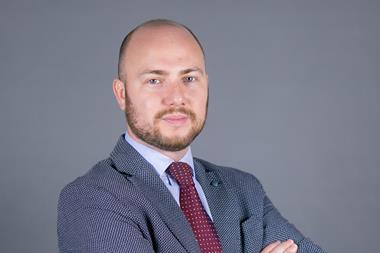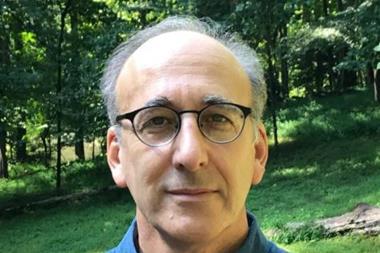Something of a divisive figure within the risk profession, one thing no-one can accuse Alex Sidorenko of is being apathetic about risk management
Like him or loathe him, Alex Sidorenko gets people talking, challenges conventional wisdom and forces risk professionals out of their comfort zones. And that can only be a good thing, even if you don’t agree with everything he publishes or object to his approach.
Sidorenko is currently on a high. Not only has he reduced his organisation, EuroChem’s cost of insurance by close to 60%, or over $10m a year, and been recognised for this achievement by FERMA and RIMS among others, he has demonstrated beyond reasonable doubt that his quantitative approach to risk management and insurance works and pays dividends.
A risk-based approach to insurance
“I was preaching about the value of quantitative risk analysis for over a decade” says Sidorenko. “Once I was handed over the responsibility for insurance, I set out to prove my hypothesis that risk management should pay for itself, not through hypothetical improvement in governance, but through hard cash savings. One year later, we’ve paid for our salaries for the next ten years.”
“I had never dealt with insurance until three and a half years ago, so I hired a couple of staff (and they laugh when I badmouth brokers, because they are all ex-brokers) who understood insurance.”
“I spent a whole year challenging everything they and other brokers said, every hypothesis and making sure we carried out the calculations first and made the decisions second. That proved to be a huge differentiator - applying a quantitative risk management approach to insurance.”
Sidorenko had begun to question some of the conversations he was having with brokers and insurers as commercial insurance rates began to take an upwards trajectory.
“They would say something was high risk and I could see from the data that it wasn’t - and vice versa – most arguments brokers were bringing us were not supported by any evidence. It felt like they were basing advice on their personal individual experience, rather than doing quant analysis across the claims portfolio. And the type of claims analysis brokers do is embarrassingly basic.”
From this starting point the hypothesis that his team could take a risk-based approach to insurance buying took hold.
“Our unbreakable rule is no insurance decision can be made before data is collected and quantitative risk analysis was conducted. Our second rule is whatever the broker says, we’ll test the hypothesis on the market first, decide later. This helped us disprove most broker advice” says Sidorenko.
“It’s about how much risk you retain and the expected cost of that retention. How much risk to keep on your balance sheet, and how much do you transfer to the insurance market and the cost of that transfer. It’s relatively simple maths behind that decision and I’m very surprised at how unprepared insurance markets and brokers are for those conversations.”
Sidorenko and his team now prepare all of their own submissions. “A typical submission the broker prepares is around three to five pages in length, very poorly describing the nature of the risk. Ours is normally around 60 pages, with detailed description of the risk profile, control environment and even our own calculations on how much the insurance should cost. At each renewal we get quotes for different limits and deductibles and then we calibrate whether it worth retaining more of the risk based on how much it costs to transfer it.”
“We always take a deductible level that has the best balance between the cost of retaining the risk and the cost of transferring it. We’re saving $10m a year in premiums, but if you added to that the savings from increasing our deductibles the savings would be even higher.
Self insurance is one of the alternatives we’re investigating,” he adds. “But in a way we’re doing it already.”
From RM1 to RM2
Sidorenko is well known for his conviction that traditional risk management standards, frameworks and techniques - which he terms ‘Risk Management 1 - are little more than “astrology”.
With his RISK-ACADEMY director hat on, he urges risk professionals to switch their focus to ’Risk Management 2’, which takes a more scientific and mathematical approach to making decisions under uncertainty.
It is an approach that first came to his attention when he was growing up in Australia, the son of a Russian academic. “I had no idea what I wanted to do after school and my Dad was doing a PhD in Chemical Engineering at one of the big universities in Australia and he said, ‘there’s a new course. A diploma in risk management’. No one knew what that was and it wasn’t even my first choice so I just happened to become one of the first ever risk management undergraduates in Australia.”
His natural aptitude for mathematics was noted early on by his tutors, who encouraged him to pursue a second major in statistics. This naturally became the foundation for a lifelong fascination in quantitative risk analysis. And it was when he started his career as a risk consultant that Sidorenko really began to question how the risk management services of the day were being packaged and sold on to clients.
Not one to shy away from challenging conventional wisdom (and doubtlessly making waves in the process) he began asking questions. “I was having conversations with the partners at the firm. They were selling concepts and ideas such as risk intelligence and risk appetite, but they couldn’t really explain the maths behind the products. It felt as though it was just window dressing - more of a marketing exercise than risk management with unclear practical value.”
It was around this time that he stumbled across (Black Swan author) Nassim Taleb’s book, Fooled by Randomness. (Sidorenko now holds a firm belief that all the best books on risk management are those that do not have ‘risk management’ in the title, bar Doug Hubbard’s ‘The Failure of Risk Management: Why it’s broken and how to fix it’. He has a similar theory on industry conferences).
“My journey in risk is all about feeling something is not right, and stumbling across alternative research which has huge value,” he says.
From there he moved on to read Hubbard, who “proved beyond reasonable doubt that many applications that risk managers have been using and promoting - scoring methodologies, risk matrices using likelihood X consequences - have been shown to be worse than useless.”
As he progressed in his career, Sidorenko began to hone his approach to Risk Management 2, becoming firm friends with Savage, Hubbard and other less conventional risk thinkers.
“I was fortunate to meet people on the top of their game, who build bridges and spacecrafts - a whole other world that does real world risk management better than risk managers do risk management. For them, it’s an essential survival tool. I started to think, maybe I wasn’t crazy and my long discomfort with RM1 has a foundation in science.”
A forum for controversial risk thinkers
This year will see Sidorenko host and participate in the RISK-ACADEMY’s fourth RISK AWARENESS WEEK (RAW 2022), with an English event in Autumn in Russian event in the Spring.
Launched well before the COVID-19 pandemic hit, RAW is the original virtual risk management conference, attracting a global audience of more than 5,000 risk professionals each year.
“I used to be very active in different conferences until I was banned,” he quips. “I’m not a very shy person. One risk association called me and said they want to invite me but asked if I would make trouble.”
”I strongly believe - and time will tell if I’m right or wrong - that without understanding the basics, the foundations of decision science, probability theory and neuroscience, there is no point in talking about anything more advanced, such as machine learning. And 99.99% of the risk managers don’t understand even the basic math behind the word risk.”
He accepts that he might not be everyone’s cup of tea, but believes his maverick approach is achieving momentum in the right direction. “I challenge a lot of people on LinkedIn who talk about Risk Management 1 - heatmaps and other astrology-like methods - and I have received a number of complaints, with people claiming that if I was more gentle, then my message would come across better.”
“It’s a hypothesis that I proved wrong. The fact I’m outspoken just has a better reach. Simple, non-emotional math. I’ve been saying the same thing for the last 15 years and to start with I was just hinting at the need for change, was gentle, this didn’t receive much traction.”
“Once I started becoming purposefully more obnoxious all that changed and I now have 30,000-plus followers, most popular free risk management book on the planet with close to 200K downloads and one of the biggest online risk conferences. So for the time being I will continue rocking the boat,” he says with a hint of a smile.




















No comments yet